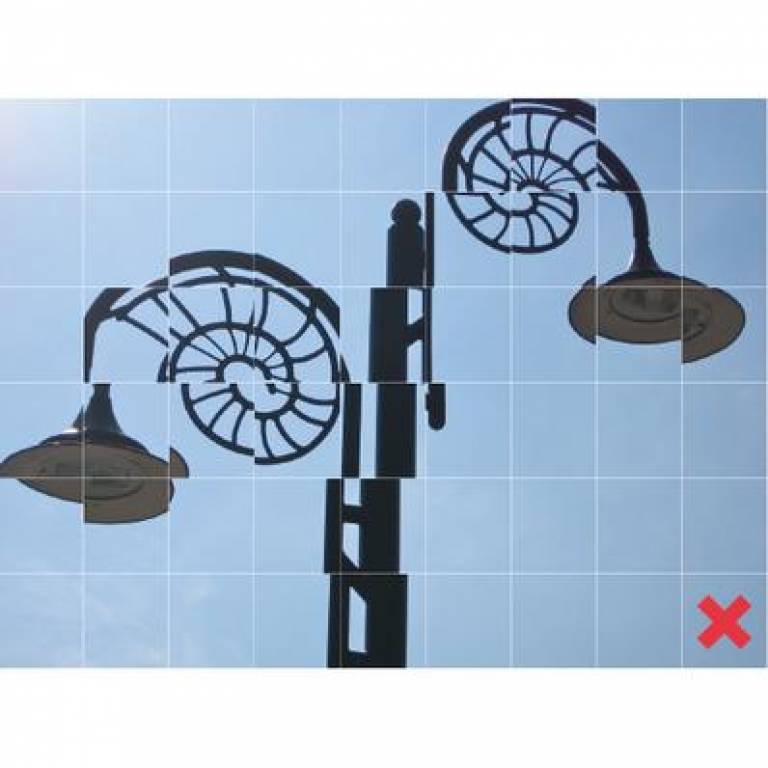UCL study reveals what we see out of the corner of our eye
23 July 2009
Links:
 ucl.ac.uk/ioo/" target="_self">UCL Institute of Ophthalmology
ucl.ac.uk/ioo/" target="_self">UCL Institute of Ophthalmology
Researchers at UCL have found that when it comes to our vision, objects are hard to identify when we look at them using the corner of our eye because our brain tends to assume the world is regular and cannot deliver more than a simplified sketch.
Known as 'crowding', this is a problem for millions of people who have lost their central vision through eye disease such as glaucoma and are forced to use the edges of their visual field to perform everyday tasks such as reading or recognising their friends.
Despite 'crowding' affecting more than 95% of the visual field, little is known about how it works apart from the fact it does not happen in the eye, but in the parts of the brain that deal with seeing.
Led by Dr Steven Dakin and John A Greenwood (UCL Institute of Ophthalmology) and Dr Peter Bex of Schepens Eye Research Institute at Harvard Medical School, the research was published in the Proceedings of the National Academy of Sciences. It found that this problem is exaggerated when looking at objects within a cluttered image. An example would be reading individual words in a page of text. This is very difficult to do unless we look straight at the words.
Dr Steven Dakin said: "By understanding crowding we can reveal much more about how the visual brain works, which will also reveal the best way to present television images, text and the internet, so that people with eye disease can get the most out of them."
It had previously been assumed that crowding makes us worse at recognising things by making our vision somehow more haphazard or random, but the study counters this. The research showed that people's judgment of the appearance of letter-like objects was altered by nearby objects in a very predictable way. Computer modelling of their results showed that 'crowding' is actually a process that makes the world appear more regular by 'blending' nearby objects together. The picture below illustrates this point.
On looking straight at it, the image appears distorted and disjointed. However, on looking straight at the red cross, and viewing the picture from the corner of the eye, the distortion disappears and the different parts of the picture all appear to be aligned.
The tendency of the brain to assume that the world is regular may have evolved because fewer cells in the brain are devoted to the edges of our vision (compared to the centre).
UCL context
The UCL Institute of Ophthalmology conducts
cutting-edge science, attracting research workers of the highest
international calibre. The most recent Research Assessment Exercise has
once more confirmed the outstanding quality of research carried out at
UCL Institute of Ophthalmology.
Its mission is to develop new treatments for eye disease out of a large
and varied foundation of basic research. The Institute works very closely with Moorfields
Eye Hospital NHS Foundation Trust and is a part of UCL Biomedicine, one of
the largest aggregates of biomedical expertise in the world.
Related news
UCL study: natural 'barcodes' help us recognise faces
New PhD studentships in ophthalmology
 Close
Close

